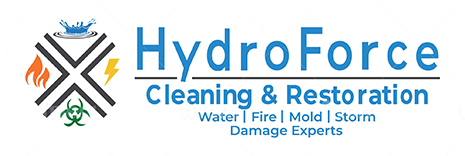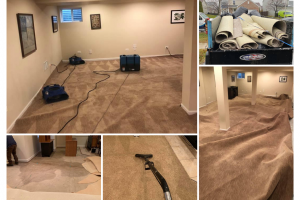What is the difference between mold removal and mold remediation?
mold removal refers to the physical removal of mold from a surface, while mold remediation involves the process of identifying and addressing the underlying cause of the mold growth to prevent it from recurring.
Mold removal typically involves the use of specialized cleaning products and equipment to physically remove mold from a surface. However, if the underlying cause of the mold growth is not addressed, the mold may return.
Mold remediation, on the other hand, involves a comprehensive approach to addressing mold growth. This includes identifying the cause of the mold growth and addressing any moisture or water damage issues that may be contributing to it. Remediation also involves the use of specialized equipment and cleaning methods to remove and decontaminate affected areas, as well as taking steps to prevent future mold growth.
In summary, while mold removal focuses on physically removing mold from a surface, mold remediation addresses the underlying causes of mold growth and takes steps to prevent it from recurring.
Can I remove mold myself?
small areas of mold growth can often be removed by homeowners using a solution of bleach and water, as well as protective gear such as gloves, goggles, and a mask.
However, larger or more severe cases of mold growth should be handled by a professional mold remediation company. This is because removing mold improperly can lead to the spread of mold spores, which can exacerbate health issues and make the problem worse.
In addition, it’s important to note that while bleach can kill mold on non-porous surfaces, it is not effective on porous surfaces such as drywall or carpet. In these cases, professional equipment and methods may be necessary to properly remove the mold.
Overall, it’s best to err on the side of caution and consult a professional mold remediation company if you’re unsure about the severity of the mold growth or the best way to address it.
What are the health risks of mold exposure?
Exposure to mold can cause a variety of health problems, especially for those with allergies or respiratory issues. The severity of the health problems can vary depending on the individual’s sensitivity to mold, the type of mold present, and the extent of the exposure.
Some common symptoms of mold exposure may include coughing, wheezing, sneezing, itchy eyes, and skin irritation. In more severe cases, exposure to mold can lead to respiratory infections, asthma attacks, and other serious health issues.
In addition, some types of mold can produce mycotoxins, which are toxic substances that can cause neurological symptoms, such as headaches, dizziness, and memory loss.
It’s important to address any mold growth promptly to prevent potential health problems. If you suspect that you have been exposed to mold and are experiencing symptoms, you should consult a medical professional for advice
How do I prevent mold growth?
The key to preventing mold growth is to control moisture levels in your home. Here are some steps you can take to prevent mold growth:
- Fix any leaks: If you notice any leaks in your plumbing or roof, make sure to fix them promptly. Moisture from leaks can contribute to mold growth.
- Control humidity: Use a dehumidifier to control humidity levels in your home, especially in areas such as basements and bathrooms where moisture can be a problem.
- Improve ventilation: Make sure your home has adequate ventilation, especially in areas where moisture can accumulate such as kitchens, bathrooms, and laundry rooms. You can install exhaust fans or open windows to improve ventilation.
- Keep surfaces dry: Wipe down surfaces that get wet regularly, such as shower walls, after use. Use a squeegee to remove excess water from shower walls and doors.
- Clean up spills promptly: If you spill water or other liquids, clean them up promptly to prevent moisture from accumulating.
- Use mold-resistant products: Use mold-resistant building materials such as drywall and paint in areas that are prone to moisture, such as bathrooms and basements.
By following these steps, you can help prevent mold growth and protect your home and family from potential health problems.
How long does the mold remediation process take?
The mold remediation process typically involves several steps, including assessment, containment, removal, and cleanup.
The assessment stage involves identifying the source and extent of the mold growth, as well as determining the best approach for remediation. The containment stage involves isolating the affected area to prevent the spread of mold spores to other parts of the home.
The removal stage involves physically removing the mold growth using specialized equipment and methods, while the cleanup stage involves thoroughly cleaning and sanitizing the affected area to prevent future mold growth.
Depending on the severity of the mold growth, the size of the affected area, and other factors, the mold remediation process can take anywhere from several days to several weeks to complete. It’s important to hire a professional mold remediation company that has experience dealing with mold and can provide an accurate estimate of the time and cost involved in the remediation process.
How much does mold remediation cost?
The cost of mold remediation can range from a few hundred to several thousand dollars.
For a small mold problem that is limited to a small area, the cost of remediation may be relatively low. However, for larger mold problems that have spread to multiple areas of the home, the cost of remediation can be much higher.
In addition, the type of mold present can also affect the cost of remediation. Some types of mold, such as black mold, are more difficult to remove and may require specialized equipment and methods, which can increase the cost of remediation.
It’s important to hire a professional mold remediation company that can provide an accurate estimate of the cost of remediation based on a thorough assessment of the mold problem. In some cases, your insurance may cover some or all of the cost of mold remediation, so it’s also a good idea to check with your insurance provider to see what is covered.
Can mold return after remediation?
Mold typically grows in areas with high moisture levels, so it’s important to address any sources of moisture in order to prevent future mold growth.
This may involve fixing leaks or water damage, improving ventilation and air circulation, and controlling humidity levels in the home. It’s also important to ensure that all affected areas are thoroughly cleaned and sanitized during the remediation process, as even small amounts of remaining mold can potentially regrow.
To minimize the risk of mold returning after remediation, it’s important to hire a professional mold remediation company that has experience identifying and addressing the underlying causes of mold growth. They can provide guidance on how to prevent future mold growth and may offer ongoing monitoring services to ensure that mold does not return.








